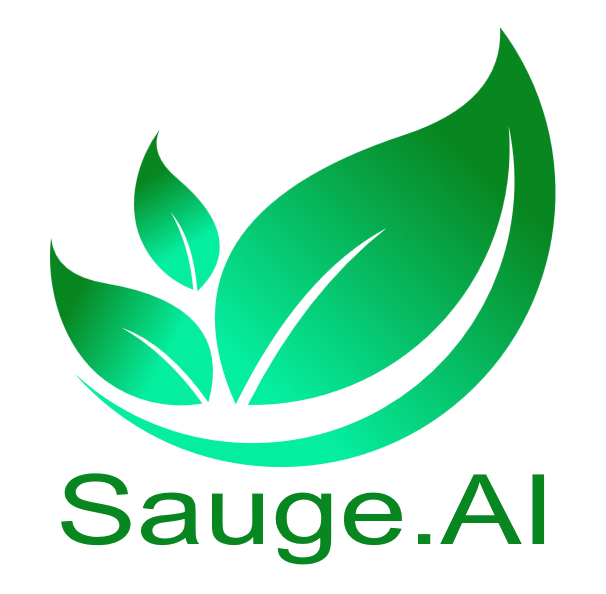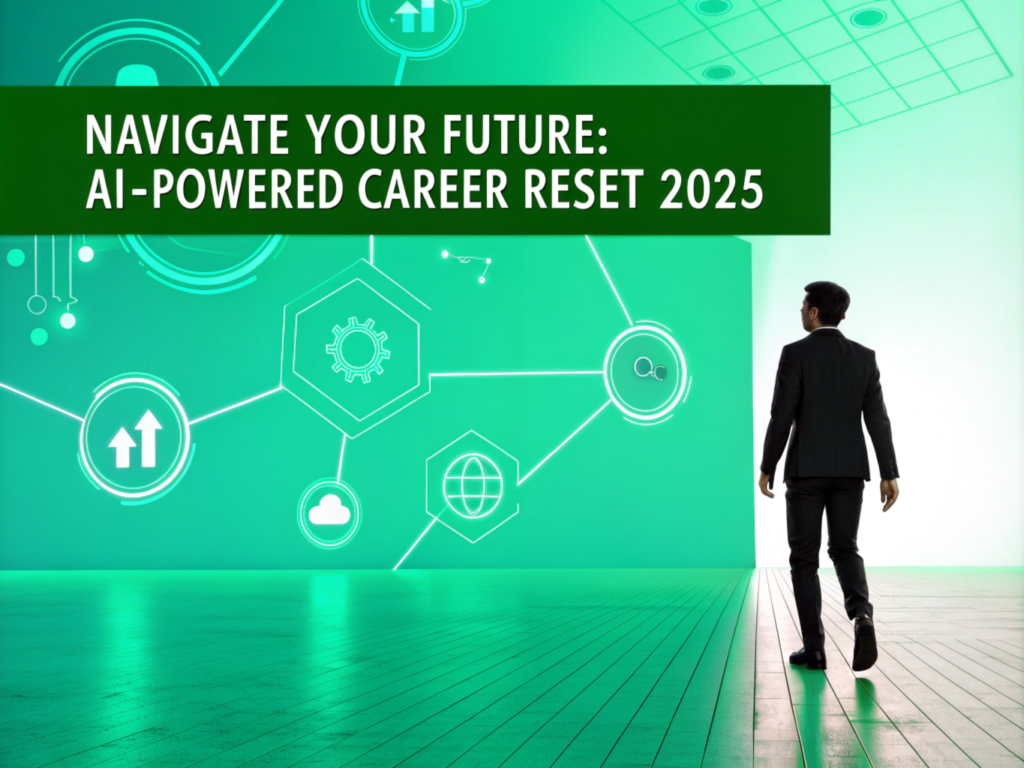Summary – In today’s rapidly evolving job market, 65% of professionals report feeling “stuck” in their current roles, according to McKinsey Global Institute’s latest workforce analysis. The solution lies in a three-pronged approach: leveraging AI-powered tools for career discovery (with 78% of successful career changers utilizing such resources, per Deloitte’s Human Capital Trends), building a future-focused skill portfolio, and creating a strategic digital presence. LinkedIn’s 2024 Global Talent Trends report reveals that professionals who combine traditional networking with AI-enhanced career development tools are 3.4 times more likely to achieve successful career transitions. This comprehensive guide will show you how to navigate your career change using both time-tested strategies and cutting-edge AI solutions.
The landscape of career development has fundamentally shifted. Boston Consulting Group’s Future of Work research indicates that 85% of the jobs that will exist in 2030 haven’t been invented yet. This reality is both daunting and exciting for professionals contemplating career changes. The World Economic Forum’s Future of Jobs Report highlights that the window for career transitions is narrowing, with skill requirements evolving at an unprecedented pace.
Are you experiencing these common signs of career stagnation?
- Spending Sunday evenings dreading the upcoming workweek, a phenomenon affecting 76% of professionals considering career changes
- Finding yourself scrolling through “best careers for the future” and “most promising careers next 10 years” during lunch breaks
- Constantly wondering about “different careers” and “high demand jobs” without taking concrete action
- Feeling overwhelmed by the prospect of “how to change careers at 30” or later
Gartner’s Strategic Technology Trends report emphasizes that AI and automation are reshaping traditional career paths, creating both challenges and opportunities for career changers.
Recognize the Pattern: Understanding Your Career Transition Signals
The most successful career transitions begin with pattern recognition. According to INSEAD Knowledge research, professionals who systematically evaluate their career dissatisfaction are 2.5 times more likely to make successful changes. “The key is not just acknowledging the need for change,” says Adam Grant, organizational psychologist, “but understanding exactly what needs to change.”
Ask yourself:
- What aspects of your current role energize you versus drain you?
- Which “different types of jobs” and “different kinds of jobs” consistently catch your attention?
- How do your skills align with “careers most in demand next 10 years”?
Leverage Modern Tools: AI-Powered Career Discovery
The traditional approach to career exploration has been revolutionized by AI tools. PwC’s Workforce of the Future report indicates that 82% of successful career changers utilized AI-powered platforms in their transition process. While traditionally this process would take weeks, professionals are increasingly turning to AI-powered tools like Sauge AI’s resume enhancement service to streamline their career development process while maintaining authenticity.
Gallup’s workplace studies show that professionals who combine AI tools with human networking are 4x more likely to land roles in “high paying careers in demand.”
Take Strategic Action: Building Your Transition Plan
MIT Sloan Management Review’s research on career transitions highlights the importance of strategic planning. “Career changes that stick follow a clear, methodical approach,” notes Herminia Ibarra, INSEAD professor and career transition expert.
For those wondering “how to switch careers,” consider these steps:
- Spending Sunday evenings dreading the upcoming workweek, a phenomenon affecting 76% of professionals considering career changes
- Finding yourself scrolling through “best careers for the future” and “most promising careers next 10 years” during lunch breaks
- Constantly wondering about “different careers” and “high demand jobs” without taking concrete action
- Feeling overwhelmed by the prospect of “how to change careers at 30” or later
Gartner’s Strategic Technology Trends report emphasizes that AI and automation are reshaping traditional career paths, creating both challenges and opportunities for career changers.
Recognize the Pattern: Understanding Your Career Transition Signals
The most successful career transitions begin with pattern recognition. According to INSEAD Knowledge research, professionals who systematically evaluate their career dissatisfaction are 2.5 times more likely to make successful changes. “The key is not just acknowledging the need for change,” says Adam Grant, organizational psychologist, “but understanding exactly what needs to change.”
Ask yourself:
- What aspects of your current role energize you versus drain you?
- Which “different types of jobs” and “different kinds of jobs” consistently catch your attention?
- How do your skills align with “careers most in demand next 10 years”?
Leverage Modern Tools: AI-Powered Career Discovery
The traditional approach to career exploration has been revolutionized by AI tools. PwC’s Workforce of the Future report indicates that 82% of successful career changers utilized AI-powered platforms in their transition process. While traditionally this process would take weeks, professionals are increasingly turning to AI-powered tools like Sauge AI’s resume enhancement service to streamline their career development process while maintaining authenticity.
Gallup’s workplace studies show that professionals who combine AI tools with human networking are 4x more likely to land roles in “high paying careers in demand.”
Take Strategic Action: Building Your Transition Plan
MIT Sloan Management Review’s research on career transitions highlights the importance of strategic planning. “Career changes that stick follow a clear, methodical approach,” notes Herminia Ibarra, INSEAD professor and career transition expert.
For those wondering “how to switch careers,” consider these steps:
- Skills Gap Analysis: Identify the delta between your current skills and those needed for “best careers to get into”
- Digital Portfolio Development: Create compelling “career change resume examples” and “career transition resume” materials
- Network Cultivation: Build relationships in “careers of the future” and “fastest growing careers 2024”
Build Your Digital Presence: The Modern Career Currency
Stanford Graduate School of Business case studies reveal that 92% of hiring managers screen candidates’ digital presence before interviews. Korn Ferry’s Future of Work research emphasizes the growing importance of digital branding in career transitions.
Modern professionals exploring “different employment opportunities” must:
- Optimize their LinkedIn profiles (consider using AI-powered optimization tools)
- Create content demonstrating expertise in “top jobs for the future”
- Build a personal brand aligned with “best occupation in the world” aspirations
Move Forward: Implementation and Momentum
The Society for Human Resource Management (SHRM) research shows that successful career changers typically spend 6-12 months in transition. Center for Creative Leadership studies indicate that professionals who maintain momentum through small, consistent actions are 3x more likely to achieve their career change goals.
Remember:
- Focus on “high demand careers” with strong growth potential
- Utilize AI tools to streamline your transition process
- Keep exploring “interesting jobs for the future” while taking concrete steps forward
The Josh Bersin Academy’s latest research concludes that successful career transitions in 2025 and beyond will require a blend of traditional career development strategies and AI-powered tools. Whether you’re exploring “careers in demand for a 2025 high school graduate” or seeking “best career opportunities in the future,” the path forward combines human insight with technological advancement.
Your career reset isn’t just about finding “jobs that make you rich” or “top 100 paying careers” – it’s about creating a sustainable, fulfilling professional future. The tools and strategies are available; the next step is yours to take.










Comments (0)
No comments yet. Be the first to leave a comment!